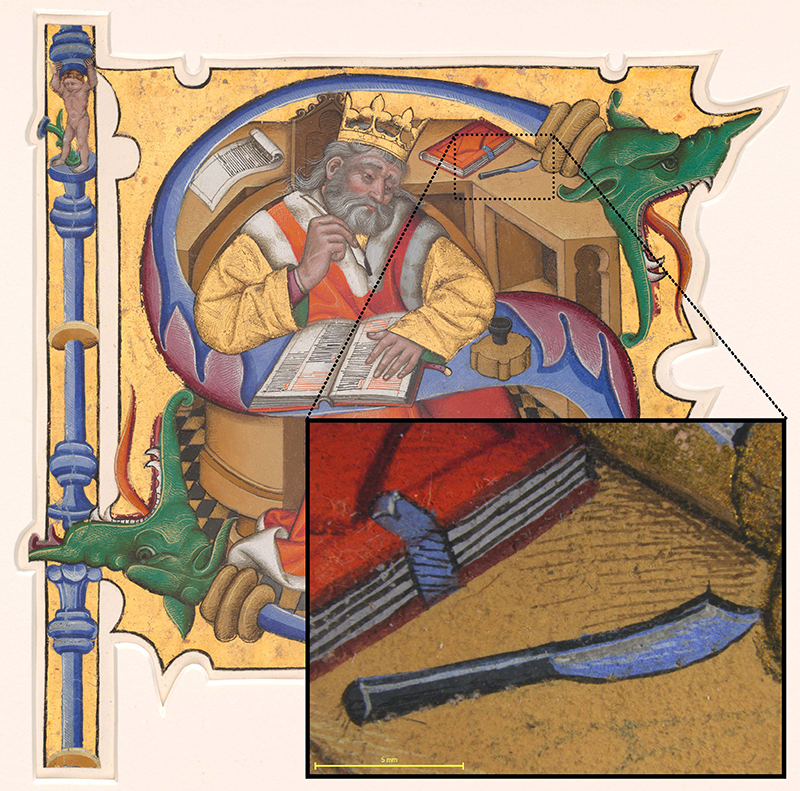This collaborative project partially reconstructs a group of parchment cuttings from a richly illuminated choir book, including 13 initials in the Rosenwald Collection at the National Gallery of Art. With the goal of catalyzing an international working group, I explore questions of materials, working methods, fragmentation, and interpretation. Nearly 100 years since the invention of the Master of the Cypresses in 1928—a misleading singular label that confuses multiple makers and identities—the methods for distinguishing and attributing the hands of illuminators and scribes increasingly employ scientific analysis and computational tools. Unfolding from newly conducted hyperspectral pigment analysis, this project proposes to compare the ways colorants and binders were mixed or layered to unpack long-standing questions of attribution and authorship. The aggregate findings will offer a more contextual understanding of the processes and sociopolitical realities motivating the makers, users, and patrons of these musical “picture books.” The products of this research will be developed into a digital publication. My contribution to this planned, multiauthored volume includes an essay exploring the rhetoric of conversion, Inquisition, and “Judaizing” through the Initial T at the National Gallery of Art (1964.8.1219), depicting five brown-robed monks. Overlapping identities and typologies in this initial set out an ambiguous role for the bearded figure kneeling below a fountain, which springs from an altar—perhaps depicting the prophet Moses or Elijah.
Beyond this project, my research on 12th-century miscellaneous and composite manuscripts from Catalonia and issues of modern historiography, codicology, and digital materiality, titled “Crossroads and Quaternions: Possibilities of Digital Platforms for the Study of Miscellaneous and Composite Codices,” appeared in Connecting the Dots: New Research Paradigms for Iberian Manuscripts as Material Objects, volume 14, issue 1, of the Journal of Medieval Iberian Studies, in 2022.

